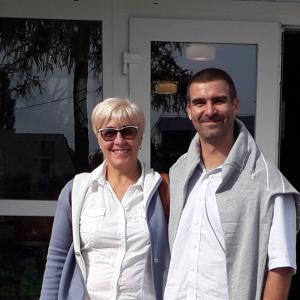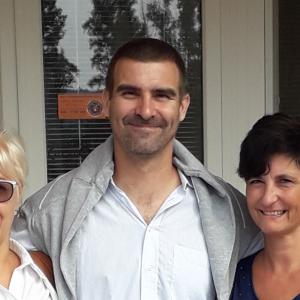Sport Science In Motion - scientific conference
2019. szeptember 5-7., Komarno, Slovakia
Motor development of Slovak and Hungarian 6 – 7-year-old pupils in the aspect of degree of obesity – First phase of a longitudinal study Introduction and aim: In Hungary (HUN) there are everyday PE lessons (5 per week), while there are significantly fewer PE lessons (2 per week) in Slovakia (SVK). We compare SVK and HUN children who started to attend primary school in the autumn of 2018 and our main hypothesis is that more regular PE lessons have more positive effect on motor development due to the improvement in the degree of obesity.
Methods: 311 children from both countries and genders (SVK: 94 boys and 104 girls; HUN: 57 boys and 56 girls) participated in the study. Their BMI percentiles were defined according to the BMIs of the measured children from the same country and then they were classified by BMI percentiles to lean (L; p<25%), normal (N; 25%<p<75%) and overweight/obese (OOB; p>75%) categories. To examine their motor development we used the Test of Gross Motor Development-2 (TGMD-2) which does not measure performance, but classifies motor coordination based on given observation criteria. TGMD-2 contains locomotor (run, gallop, hop, leap, horizontal jump, slide) and object control (striking a stationary ball, stationary dribble, catch, kick, overhand throw, underhand roll) tasks.
Results: 23.01% was L and 24.78% was OOB among the HUN pupils and 23.23% was L and 27.75% was OOB among the SVK children. There were no significant differences between the BMI categories or the two countries in the results of different locomotor tasks. The L HUN pupils (38.5 ± 1.2 S.E.M.) were significantly better than the OOB HUN children (33.39 ± 1.49) in the overall results of locomotor tasks. We did not detected similar difference among the SVK pupils. In the object control tasks, there were no significant differences between the BMI categories’ or the two countries’ results of striking a stationary ball, stationary dribble or underhand roll. The L SVK children’s results of catch was significantly lower (3.72 ± 0.27) than the N SVK pupils’ (4.79 ± 0.14) or the L HUN children’s (5.08 ± 0.23) results. The L HUN children kicked the ball with higher points (6.58 ± 0.35) than the L SVK pupils (5.13 ± 0.33). There were remarkable differences between SVK and HUN pupils in all the three BMI categories’ results of overhand throw (L SVK: 3.24 ± 0.27; L HUN: 5.46 ± 0.31; N SVK: 3.22 ± 0.17; N HUN: 5.76 ± 0.25; OOB SVK: 2.98 ± 0.24; OOB HUN: 5.54 ± 0.26). In the overall results of object control tasks, there were no significant differences among the BMI categories, but the points of L (33.15 ± 0.97) and N (34.29 ± 0.79) HUN children were higher than the SVK pupils’ results in the same BMI categories (L SVK: 25.8 ± 1.21; N SVK: 28.23 ± 0.84). In the cumulate outcome of TGMD-2, the OOB HUN pupils’ scores (64.29 ± 2.02) were remarkably lower than the L (71.65 ± 1.51) or N (70.73 ± 1.23) HUN children’s scores. The L HUN pupils achieved higher overall TGMD-2 scores than the L SVK children (62.72 ± 1.48).
Conclusions and further perspectives: Our results seem to prove that the OOB children’s motor skills are weaker. We detected a few significant differences between SVK and HUN pupils’ motor development, but we would like to perform the same examinations once in every semester during the first two school years, and follow up the same indicators among the same children. Now we reported the results of the first measurement period with participants who newly enrolled in 1st class of school education after nursery. We suppose that the differences would be more remarkable when the pupils spend more time in the system of everyday PE or 2 PE lessons per week.
Full article available for download below.




